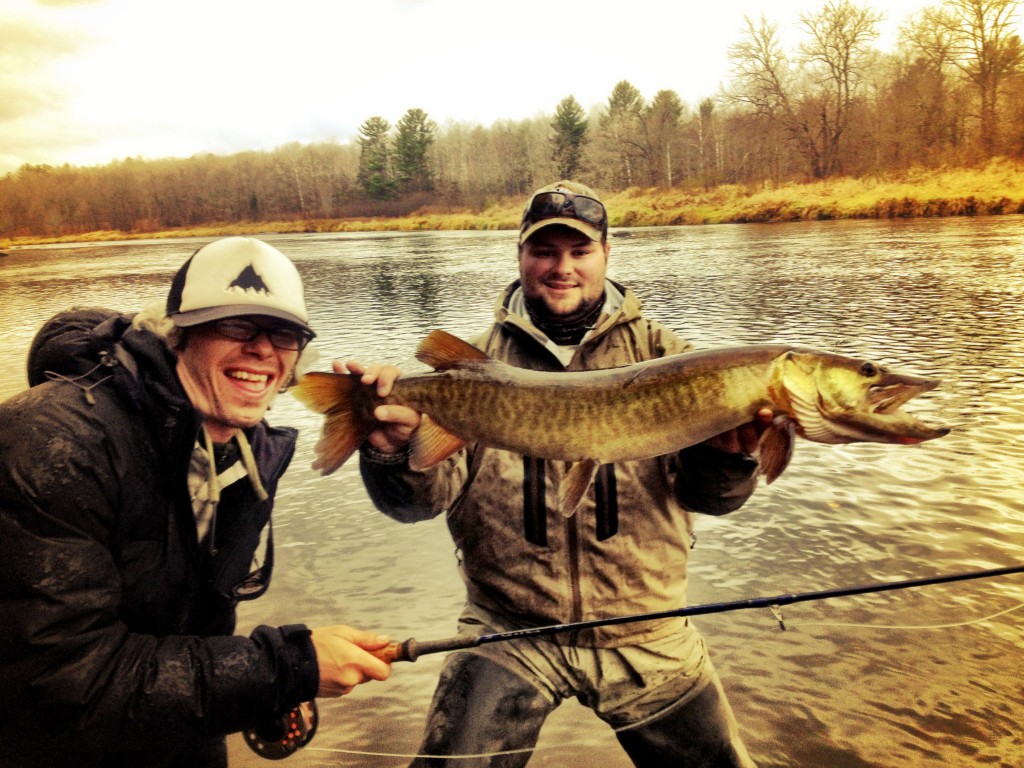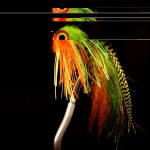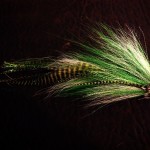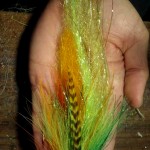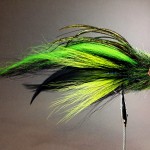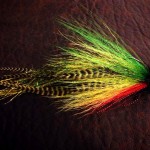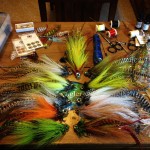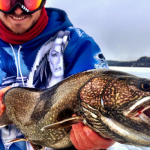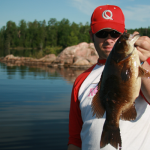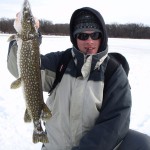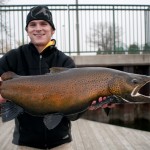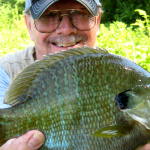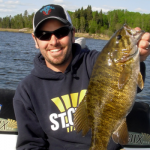By Chris Willen
Fly fishing for muskellunge has been burning through the angling circles like wildfire. For anglers transitioning from conventional gear to fly gear, many questions arise. The major one often asked is how does a musky fisherman get started fly fishing?
Break fly fishing down to the basics and it’s easier than you may think. You are never going to be able to cover water as proficiently as casting big bucktails, ripping large plastics, chucking topwaters, or trolling. Therefore with fly fishing, the objective is to break down your body of water into the high percentage areas and focus all of your efforts there. Choose four or five spots that you have either seen muskies or caught them from and spend the day picking those spots apart with flies.
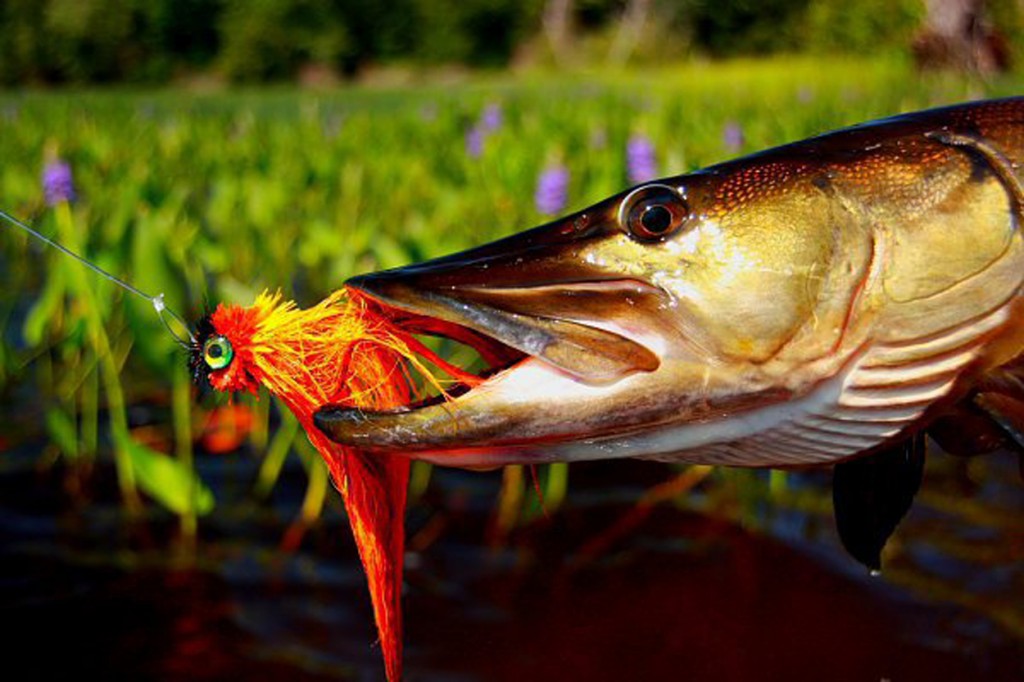
In all likelihood, the muskies you are looking for have rarely ever seen a fly before. If you buy into the conditioning of fish you could trigger that really big girl to come out and play the game; at least that’s what you need to keep telling yourself when you are casting your big ten weight fly rod all day and your arm feels like it might just fall off. Make sure that you put that fly into every cut of that weed line and around that whole brush pile you’re targeting. I can’t stress that enough. Make three or four casts into that area before moving on to the next set of fan casts.
Musky fishing is very visual. With fly fishing, it’s much more of a “sight bite” for the fish. Unlike a double-10 bucktail that kicks out a world of vibration down the fishes lateral line, flies don’t impart such characteristics. Thus you want to make sure that muskies have the opportunity to be mistaken that the fly is an afternoon snack.
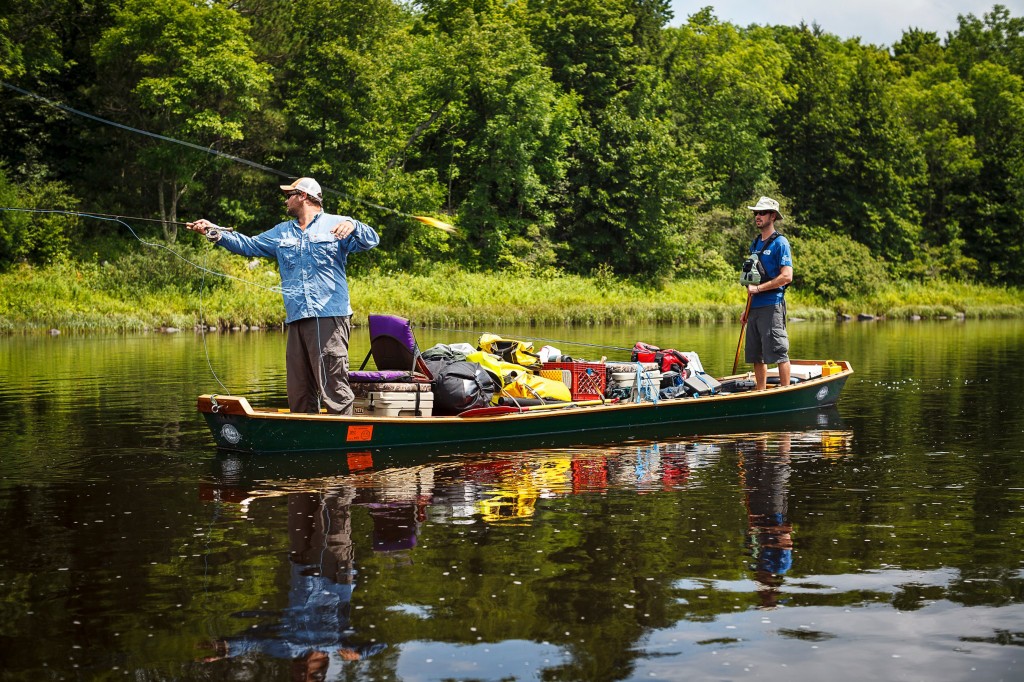
With your standard casting gear you are a good distance away from the area you’re fishing. Long distance casting is not easily done with flies, at least not in the beginning. Eventually you will learn to cast for distance, but its not entirely needed or advised as hookup ratios will go downhill with so much line out. The key to hooking up with muskies is a “strip set” technique, pointing your rod directly at the fish and stripping that line in until it’s as tight as possible. At this point of the presentation you really need to hammer down a couple more big strips to make sure that hook is set to the bend. Then you can raise the rod and let them battle that big 9 foot spring. My suggestion for you is to forget you even have a reel on your rod. The moment you start trying to get that fish you have worked so hard for on the reel, it will be gone. For landing the fish, you are better off stripping the fish to boatside and worrying about all the line once the fish is in your cradle or net.
Over the years, many different flies have been invented and created by anglers for muskies. I primarily use deer hair pattern (Primo Tail) based off Brad Bohen’s Optic Minnow pattern and Buford pattern. The Buford has a cut deer hair head and has action very similar to a glide bait that most musky anglers are familiar with. The optic has a little more of a streamlined retrieve getting most of its action from the back hook kicking back and forth. Another I use is Matt Grajewski’s, of Michigan. He has a pattern called the Slippery Pete which has a real nice action. It’s a good panfish imitator that hangs well on the pause with a very slow sink. Lastly another I use is Eli Berants, of Great Lakes Fly. He incorporated a rubber skirt into one of his fly patterns called the Optimus Swine.
If you have fished bass jigs in the vicinity of muskies, you’ve most likely been bitten off before. There’s something about rubber skirts that muskies can’t resist. For this, Nick Granato of Utah (flyobsession.com) has an interesting pattern called the Ghetto Tramp which he ties a popper head into the shank of the hook and it darts all over the place when you strip it in. It’s very erratic, much like the kicking action of a crankbait. Part of the excitement in fly fishing is being creative and tying your own flies. But if you haven’t tied before or have time for it, you can find a couple of these patterns for sale through rainysflies.com, greatlakesfly.com or muskycountryoutfitters.com.
Next, you will need to familiarize yourself with the different types of fly lines. The major line types are sinking, intermediate, and floating. Most likely you will only need a sinking line to present large streamer flies. Musky flies are typically a little bulky in order to get the necessary water push that musky love so much. Therefore sinking line helps present them deeper in the water column.
Sinking line usually imparts the best action out of your fly. But as with any type of fishing some things work better for certain situations than others. When working weeds it helps to use line that won’t sink quickly or get hung up in all that cabbage. That’s where your intermediate lines come into play. They sink very slowly, depending on how fast you retrieve they plunge within the first few feet of the water column. Floating line mainly comes into play when casting big surface poppers or sliders. With most big foam style poppers you can get away with using an intermediate line, which will save you some money and it gives the fly a good loud pop because it does drag the popper down just a bit.
As far as leader material is concerned its very simple. You can get away with a level leader style if you would like. That is just a straight piece of 30-40 lb fluorocarbon or monofilament from your fly line. When fishing a lot of structure, I like to tie in a piece of 16 to 20 lb “break tippet” so if I do get hung on something I can pull it straight up and it will break, hopefully, and wont damage my fly line. Losing your flies sucks, but breaking your fly line is worse, as they aren’t cheap. From your leader you will need what is called a bite guard. This is what flies are tied to. Some fly anglers use fluorocarbon while others use wire. I prefer to use wire as it leads to fewer bite offs.
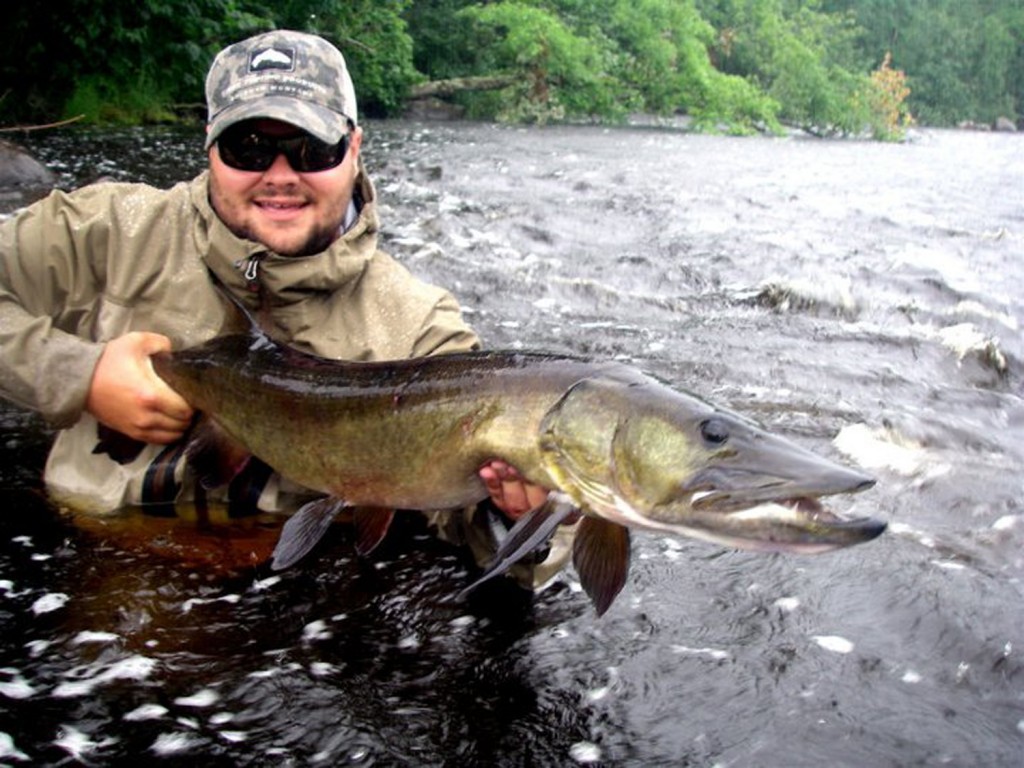
Fly fishing is not like gear fishing where muskies seldom get to the leader as they are just chomping on rubber, hard plastic or the wire of your bucktail. Flies are neutrally buoyant, therefore when a muskie strikes it will suck it in to the leader and you have them hooked where they are chewing on your leader. If you’re going to use fluorocarbon I suggest 80-120 lb test, but you will get bitten off at some point, guaranteed. To avoid heartbreaking blows I like using Tyger Leader. It’s a coated tie-able fishing wire. 40 or 50 lb has worked very well for me and I have never seen a musky bite through wire….yet. Tyger Leader is very easy to work with and the only thing you will need to bring with is a good pair of wire cutters or dykes to cut through the wire. I use a perfection loop to attach the flies but you can tie on a snap if you so choose.
When it comes to fly rod selection, you don’t need to spend $800 or more. Spending an outrageous amount simply is not needed. Fly fishing for muskies isn’t some super delicate presentation towards uber-selective fish like trout. All that’s required is a rod that can handle the load of big lines, bigger flies, and even bigger fish. I suggest a 10 to 12 weight rod depending on how big of fly you’re throwing. Make sure the rod can handle figure-eights. Yes, even in musky fly fishing it’s very important to do your figure-eights as you would with conventional gear. Your fly rod should have a solid backbone and durability. At the risk of sounding like an infomercial, one of the best rods I have found for this is the Beulah Blue Water Series 10/11 weight. It’s available with two tip sections in case you drop the fly into your rod and the price doesn’t make you want to throw up on your computer. It also handles big muskies better than most other rods I have used over the years.
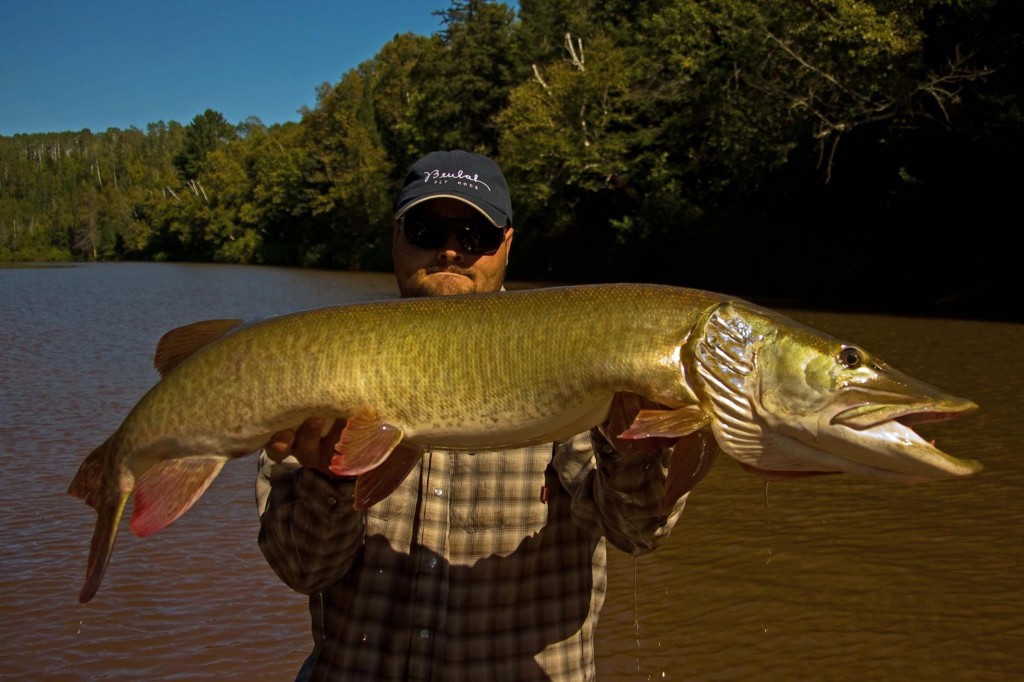
Once you are geared up, outfitted with an assortment of flies, and have practiced the mechanics of casting and stripping, the only obstacle you have to overcome is actually going fishing. Muskies aren’t magically easier to catch because you are using a fly rod. They are still known as the fish of 10,000 casts, so keep casting away. Who knows. You might catch one within the first hour of fishing, or it may take hours and hours and hours of chasing the elusive musky before you get to feel the thrill of fighting one on a fly rod. When you do it will all be worth it and you will see what the hubbub is all about. Or if fly fishing isn’t for you, maybe after you get one you will call it a one-and-done, and eventually decide you would rather go back to fishing conventional gear and only use the fly rod in certain applications of your musky fishing. In any case the fly rod will be one more thing to add to your arsenal of chasing one of the best freshwater game fish there is.
